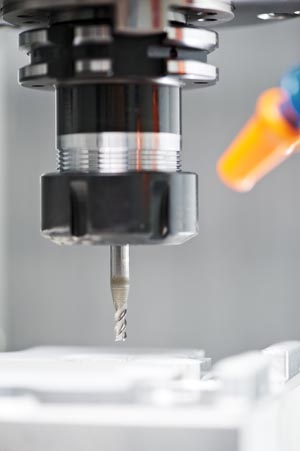How Computer Aided Manufacturing is Changing the World
To help develop this article, click 'Edit this article' above.
Computer Aided Design (CAD) and Computer Aided Manufacturing (CAM) machinery are found in all industries all over the globe. Many factory floors are now entirely void from human interaction, populated only by 'robots'. The introduction of Computer Numerical Control (CNC) machinery has enabled industry to not just cut back on manpower but also to produce a higher quality of precision parts that are entirely free from human error and cheaper.
CNC machining and milling does however require the precision of a trained CAD operator; this is where human intervention is still necessary. Behind every CNC lathe, drill, or machine there is a computer that is using CAD software to transmit the messages to the machine to tell it what to do. Behind that computer there is the software professional who programmed it, behind that the person who designed the software, and behind that the person who designed the computer in the first place.
Although a robot can carry out virtually any task required of it in the field of CNC engineering, highly trained professionals are required to monitor these robots and ensure they do what they are programmed to.
On a factory floor you will see many CNC lathes, drills, and machines at work, and no one anywhere to be seen. Some setups are left to run overnight by themselves; this is made possible by the fact that on detection of an error by the computer, the CAD software will shut down the machine in question until an engineer can attend.
Computer aided design is used in a huge range of applications in the modern world; from mass producing car parts to boring out metal tubes, CNC milling can quickly carry out tasks that it used to take people many hours to do. CAD software allows for further precision, and CAD design has virtually put an end to hand drawings; with precise vector lines being used by CAD software. The human brains are still present behind the design, but the human error is not.
CNC is changing the world that we live in, from something as simple as making a tin can perfectly round, to engineering aerospace parts. With every advance in technology, precision engineered parts can be made to higher specifications, with more complex designs, and without human error.
--Kristian 11:50, 25 May 2015 (BST)CAM Machine; Bringing you the best in CNC in Bristol
Featured articles and news
Gregor Harvie argues that AI is state-sanctioned theft of IP.
Preserving, waterproofing and decorating buildings.
Many resources for visitors aswell as new features for members.
Using technology to empower communities
The Community data platform; capturing the DNA of a place and fostering participation, for better design.
Heat pump and wind turbine sound calculations for PDRs
MCS publish updated sound calculation standards for permitted development installations.
Homes England creates largest housing-led site in the North
Successful, 34 hectare land acquisition with the residential allocation now completed.
Scottish apprenticeship training proposals
General support although better accountability and transparency is sought.
The history of building regulations
A story of belated action in response to crisis.
Moisture, fire safety and emerging trends in living walls
How wet is your wall?
Current policy explained and newly published consultation by the UK and Welsh Governments.
British architecture 1919–39. Book review.
Conservation of listed prefabs in Moseley.
Energy industry calls for urgent reform.
Heritage staff wellbeing at work survey.
A five minute introduction.
50th Golden anniversary ECA Edmundson apprentice award
Showcasing the very best electrotechnical and engineering services for half a century.
Welsh government consults on HRBs and reg changes
Seeking feedback on a new regulatory regime and a broad range of issues.
























